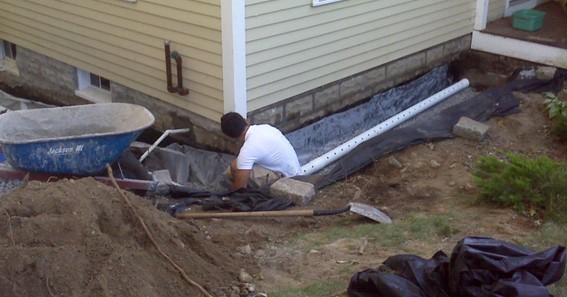Masonry homes are beautiful and sturdy but not immune to water damage. A leaky basement can cause numerous problems, from mold growth to foundation damage. You need an effective drainage system to prevent these issues and dry your home. This article will explain interior basement French drain systems and how to install them.
What is an Interior Basement French Drain System?
An interior basement French drain system solves a problem that, unfortunately, many homeowners experience – a wet or flooded basement. This type of drain system is installed inside the basement and is designed to capture and channel water away from the house, preventing any damage that may occur. If you’re considering installing an interior basement French drain system, hiring a professional Boston Masonry contractor with experience is important. They can assess the situation and devise a customized plan to protect your home from further water damage. Investing in this solution lets you sleep soundly, knowing your basement is safe and secure from water damage.
How Does it Work?
An interior basement French drain system is often considered one of the most effective options for basement waterproofing solutions. But how does it work? Essentially, this system involves installing a drainage network along the foundation walls that captures any water and channels it towards a sump pump, which then pumps it out and away from your home.
While it might sound simple enough, this is a complex process that requires the expertise of a skilled Masonry Contractors Boston. With their knowledge and specialized tools, they can ensure that the drain system is installed correctly, effectively protecting your home from water damage.
Installing an Interior Basement French Drain System:
Installing an interior basement French drain system can be complicated and challenging. It requires specialized knowledge, tools, and an understanding of the home’s foundation. Here is an overview of the installation process:
- The first step is to prepare the basement floor by removing any flooring, like the tiles or carpet.
- Next, excavate along the perimeter of the basement floor to create a trench.
- Install the drain pipe in the trench, connecting it to the sump pump.
- Surround the pipe with washed gravel to help disperse water.
- Cover the gravel with drainage fabric to prevent clogging.
- Fill the trench with concrete to create a new floor.
- Install a sump pump and discharge pipe to divert water from the foundation.
Maintenance:
Excess water causing damage to your property can be a nightmare for any homeowner, and a French drain system is an effective way to avoid such problems. However, more is needed to install the system and remember about it. Regular maintenance is necessary to keep it in good working condition and prevent future water leakage.
Neglecting your French drain system could lead to anything from minor issues like soil erosion to major problems like flooding. By staying proactive and carrying out regular checks, you can stay ahead of these potential disasters and ensure the longevity of your French drain system.
In conclusion, installing an interior basement French drain system keeps your home dry and prevents water damage. With the right tools and knowledge, this system can be installed by a motivated homeowner or professional contractor. It may be costly, but it pays for itself in the long run by protecting your home’s foundation and keeping your family safe and healthy. So, if you’re experiencing water problems in your basement, consider installing an interior French drain system today.
Click Here – Dealing with Blocked Drains: Tips to Avoid Shower Drain Rooting and When to Call a Plumbe

